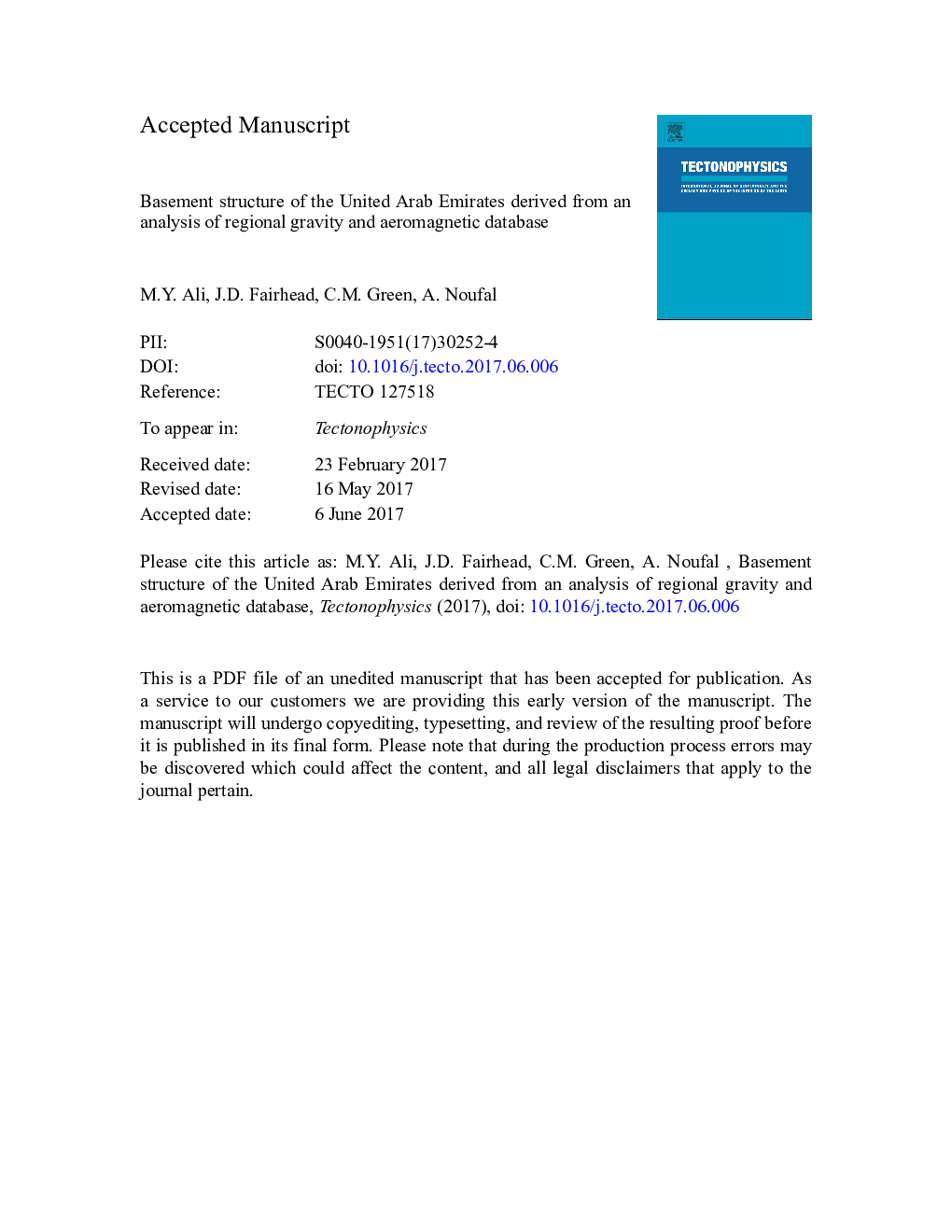| کد مقاله | کد نشریه | سال انتشار | مقاله انگلیسی | نسخه تمام متن |
|---|---|---|---|---|
| 5781557 | 1636694 | 2017 | 67 صفحه PDF | دانلود رایگان |
عنوان انگلیسی مقاله ISI
Basement structure of the United Arab Emirates derived from an analysis of regional gravity and aeromagnetic database
ترجمه فارسی عنوان
ساختار زیرشیه امارات متحده عربی از تحلیل گران منطقه ای و پایگاه داده های هواشناسی حاصل می شود
دانلود مقاله + سفارش ترجمه
دانلود مقاله ISI انگلیسی
رایگان برای ایرانیان
کلمات کلیدی
ساختار زیرزمین، امارات متحده عربی، طیف قدرت، شیب عمودی عمق، عدد ناخودآگاه محلی
موضوعات مرتبط
مهندسی و علوم پایه
علوم زمین و سیارات
فرآیندهای سطح زمین
چکیده انگلیسی
Gravity and aeromagnetic data covering the whole territory of the United Arab Emirates (UAE) have been used to evaluate both shallow and deep geological structures, in particular the depth to basement since it is not imaged by seismic data anywhere within the UAE. Thus, the aim has been to map the basement so that its structure can help to assess its control on the distribution of hydrocarbons within the UAE. Power spectrum analysis reveals gravity and magnetic signatures to have some similarities, in having two main density/susceptibility interfaces widely separated in depth such that regional-residual anomaly separation could effectively be undertaken. The upper density/susceptibility interface occurs at a depth of about 1.0Â km while the deeper interface varies in depth throughout the UAE. For gravity, this deeper interface is assumed to be due to the combined effect of lateral changes in density structures within the sediments and in depth of basement while for magnetics it is assumed the sediments have negligible susceptibility and the anomalies unrelated to the volcanic/magmatic bodies result from only changes in depth to basement. The power spectrum analysis over the suspect volcanic/magmatic bodies indicates they occur at ~Â 5Â km depth. The finite tilt-depth and finite local wavenumber methods were used to estimate depth to source and only depths that agree to within 10% of each other were used to generate the depth to basement map. This depth to basement map, to the west of the UAE-Oman Mountains, varies in depth from 5Â km to in excess of 15Â km depth and is able to structurally account for the location of the shear structures, seen in the residual magnetic data, and the location of the volcanic/magmatic centres relative to a set of elongate N-S to NE-SW trending basement highs. The majority of oilfields in the UAE are located within these basement highs. Therefore, the hydrocarbon distribution in the UAE basin appears to be controlled by the location of the basement ridges.
ناشر
Database: Elsevier - ScienceDirect (ساینس دایرکت)
Journal: Tectonophysics - Volumes 712â713, 21 August 2017, Pages 503-522
Journal: Tectonophysics - Volumes 712â713, 21 August 2017, Pages 503-522
نویسندگان
M.Y. Ali, J.D. Fairhead, C.M. Green, A. Noufal,
